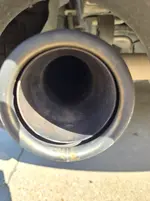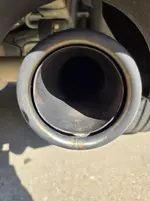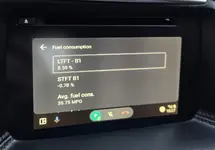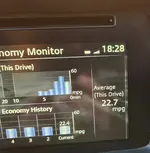First-time poster here! I just bought a 2016 CX-5 Touring with around 107K miles. It was supposed to be for my daughter as her car got totalled but she wasn't too keen on it so I'm going to use it as my Toyota has 230K miles on it and I want to get rid of it before it starts to require expensive repairs.  The previous owner took very good care of the Cx-5 and did all the oil changes and other maintenance items regularly and on time.
The previous owner took very good care of the Cx-5 and did all the oil changes and other maintenance items regularly and on time.
Recent items done (not at a dealer): 10/13/2023, 82,000 miles - Transmission service, Brake fluid flush, Coolant Flush, Fuel Injection Service, Brakes & Rotors (all)
I've only had it for a week but I noticed today that the fuel trim is quite high, 8.5% for LT and 3% for ST. It doesn't go up much when driving, just a few percentage points at most and sometimes ST will be around zero depending on the environment, driving style, etc.
I asked the dealer service department about the fuel trim and they weren't at all concerned. I asked if carbon buildup on the intake valves could do it (seeing as it's close to 100K miles) but they didn't think it would affect the fuel trim, at least not more than a percentage point or two. I've heard conflicting things about this. Any thoughts (see related second question below)?
So, all that to say, I was wondering if anyone has any ideas I can try myself to see if I can get this a little closer to normal before taking it to a mechanic. Or am I worried about nothing?
Another question: Do I need to get the intake valves and fuel injectors cleaned seeing as it's over 100K miles? I've heard Mazda is better about this than other makes but from what I understand this is always going to be an issue with GDI engines (except maybe the dual-injection engines). The previous owner did fairly decent length trips in it but I will be doing much shorter trips. Is it worth getting the $200 fuel induction service (the dealer quoted $199.99) or should I be looking at finding a place that does walnut blasting?
I've always been a Toyota guy but I'm looking forward to my first Mazda as I've heard great things about them.
I appreciate any help or advice. Thank you in advance!
Recent items done (not at a dealer): 10/13/2023, 82,000 miles - Transmission service, Brake fluid flush, Coolant Flush, Fuel Injection Service, Brakes & Rotors (all)
I've only had it for a week but I noticed today that the fuel trim is quite high, 8.5% for LT and 3% for ST. It doesn't go up much when driving, just a few percentage points at most and sometimes ST will be around zero depending on the environment, driving style, etc.
I asked the dealer service department about the fuel trim and they weren't at all concerned. I asked if carbon buildup on the intake valves could do it (seeing as it's close to 100K miles) but they didn't think it would affect the fuel trim, at least not more than a percentage point or two. I've heard conflicting things about this. Any thoughts (see related second question below)?
So, all that to say, I was wondering if anyone has any ideas I can try myself to see if I can get this a little closer to normal before taking it to a mechanic. Or am I worried about nothing?
Another question: Do I need to get the intake valves and fuel injectors cleaned seeing as it's over 100K miles? I've heard Mazda is better about this than other makes but from what I understand this is always going to be an issue with GDI engines (except maybe the dual-injection engines). The previous owner did fairly decent length trips in it but I will be doing much shorter trips. Is it worth getting the $200 fuel induction service (the dealer quoted $199.99) or should I be looking at finding a place that does walnut blasting?
I've always been a Toyota guy but I'm looking forward to my first Mazda as I've heard great things about them.
I appreciate any help or advice. Thank you in advance!










